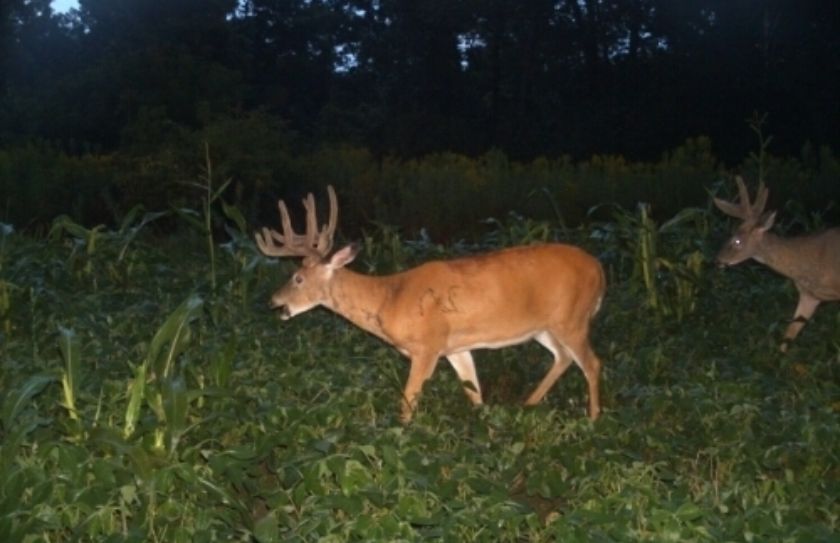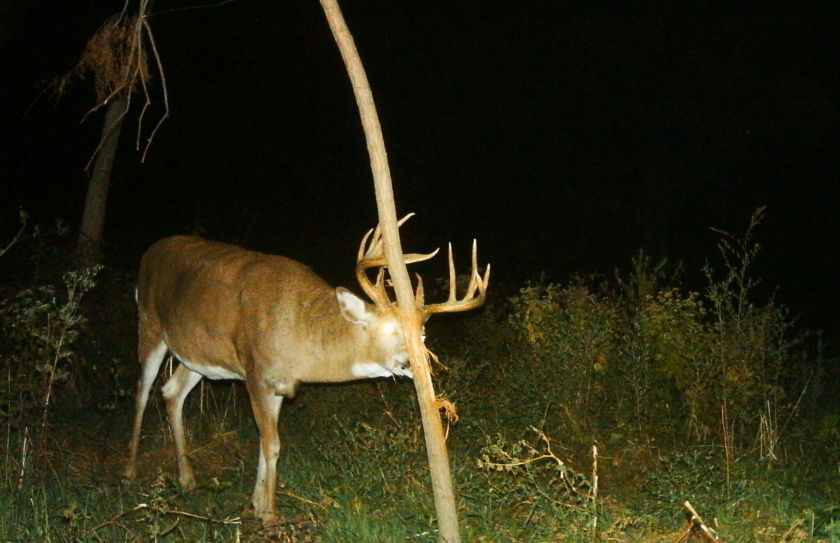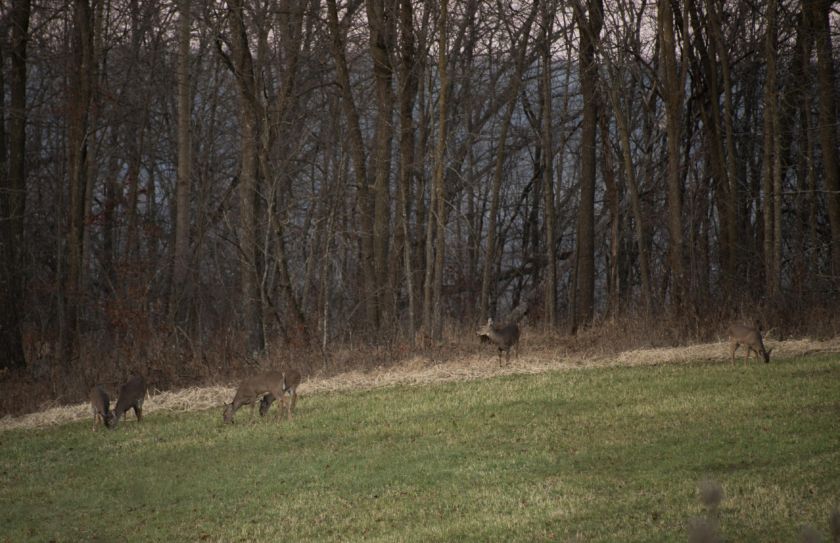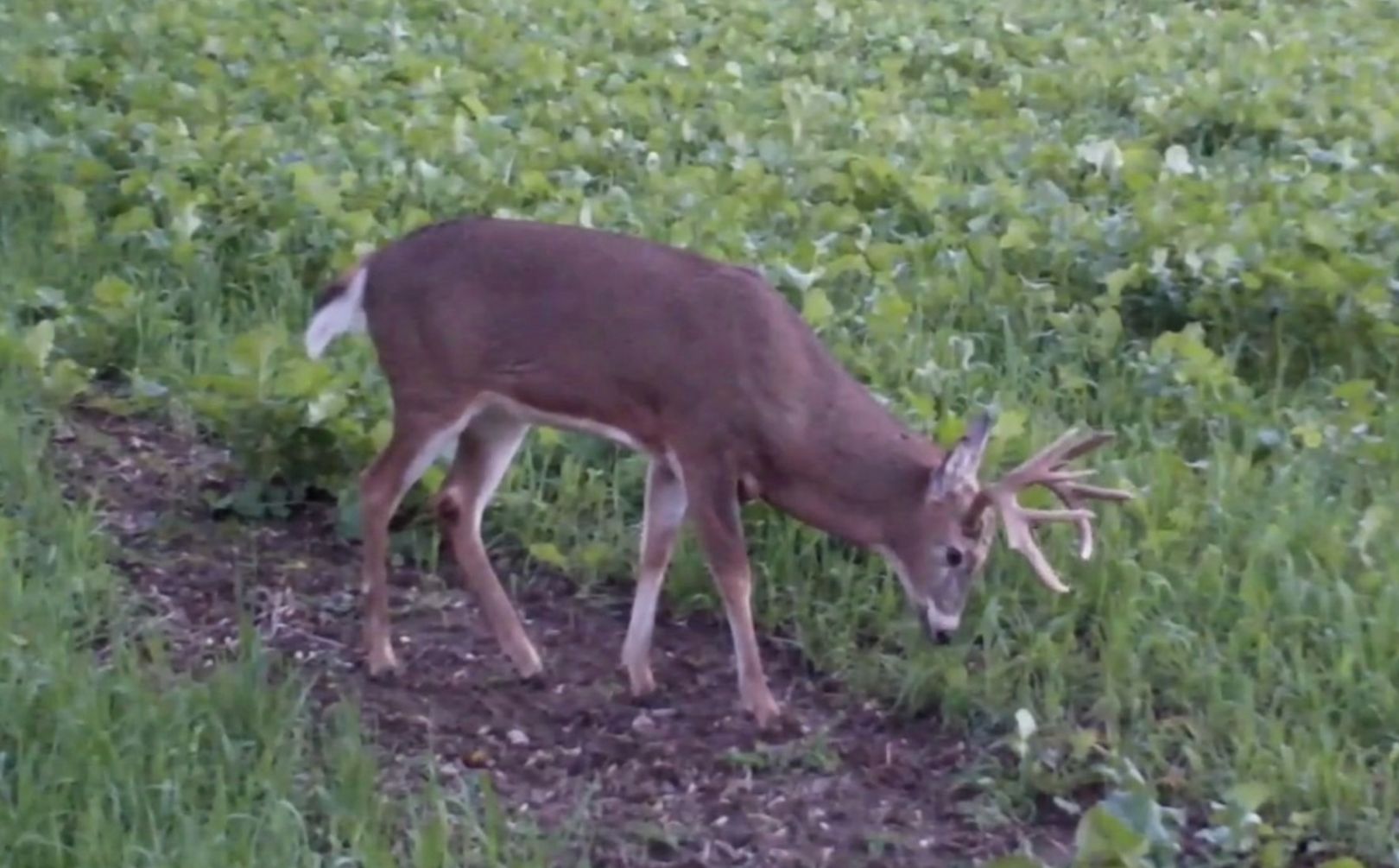
The brassica family of whitetail food plot forages may just be the most can't miss and important planting for your annual whitetail goals, every single season. They are also highly misunderstood. While brassica misunderstandings are many, you can still make sure that they are a fit on nearly any hunting parcel, this season.
"They won't touch them", "The first frost date" and that brassicas are actually "Bad for whitetails" are just a handful of the common misunderstandings and mistruths about brassicas. The fact is that a high quality brassica combo can produce the highest nutritional levels, digestibility levels and most amount of Fall forage in the shortest period of time, compared to nearly any other whitetail food plot planting. If you can easily plant brassicas and the local deer herd loves them, you and the local deer herd are in luck. However, if your brassica plantings fail to grow quickly or attract whitetails, it's time to figure how to make them work for you!
*Need to buy a high quality brassica blend that works? Make sure to check out Northwoods Whitetails!
How to Make Sense of Proven Brassica Strategies
Maybe you experience whitetails pounding brassicas every season and have for many years or maybe you can't make sense of your rotting brassica plants that you find each Spring. Either way, there is a brassica strategy that can help explain "why", for you:
1. The Myth of the First Frost Date
In May of 1999 I planted my first brassica planting in the UP of MI and by the end of July of 1999 I experienced my first crop failure of brassicas. The problem? Even though the deer had never been exposed to brassicas and even though the first frost was still 2-3 months away, the deer devoured my young brassica crop to the dirt.
What I've found in a couple dozen states with brassica plantings is that the "first frost date", represents a mid point between brassicas being completely consumed in July to rotting in the Spring. While leaf change, the whitetail rut and Labor Day all loosely represent a mid-point of brassica consumption, saying that any one of those annual occurrences need to take place for deer to forage on brassicas, is just as inaccurate as alluding to the first frost date. Instead, there are several proven ways for you to control the deer foraging date of your brassica planting, and none of them have anything to do with the first frost date.
One misleading fact about the first frost date is that freezing temperatures turn the starches within the brassica plants to "sugar", in theory sweetening the plants and making them even sweeter for whitetails. While the chemical process that brassica plants go thru is true, what I have experienced is that this is just a small fraction of the influences of deer foraging dates. For example, any Spring rotting brassica planting I have observed has already gone thru numerous frosts and freezes throughout an entire Winter within the North 1/2 of the Country, yet they were still completely ignored. On too many client parcels to count in every Northern state however, the brassica forage date has been able to be drastically moved to a Fall date, by establishing early season patterns of use, creating food plot diversity continuity, getting rid of stand-alone brassica plantings and by using plot sweeteners. Most often the forage date can be taken from rotting brassicas in the Spring, to actually before the first frost date has even taken place. Some other major considerations are the number of deer per square mile, the proximity to additional quality food offerings and the percentage of daytime holding cover within the neighborhood. To suggest that the first frost date is an indicator of when deer will actually begin to forage on brassica plantings, represents only a very tiny portion of the very large window of potential forage timing.
2. Brassicas Love Whitetails - whether they know it or not!
Deer don't always devour brassica plantings the first time that you plant them, but there are several extremely common reasons why. Stand-alone brassica plantings and low deer number ag regions are two of the largest culprits of low browsing rates for brassica plantings. However, there are 4 easy ways to make sure that you give a brassica combo the best opportunity to be attacked by the local deer herd. If you haven't tried these 3 brassica strategies, you have no reason to complain:
*By splitting your food plot in 1/2 you can make sure that you have a high quality forage like Winter peas, late planted soybeans, clover or a light amount of oats, to begin to establish the pattern of feeding use on your food plots. Heavy feeding by whitetails within the same plot on 1/2 of the plot, allows the deer herd to fully establish their Fall range near your plot, after the annual Whitetail Shift. Adjacent bedding areas, travel corridors and other whitetail habitat features such as mock scrapes or waterholes, should be in use before you expect whitetails to consume your brassica planting. With a high quality early season forage that begins to be foraged on every day by whitetails sometime in August on one 1/2 of your plot, makes sure that whitetails are set up to fully appreciate and utilize the brassica planting on the other 1/2 of the plot.
*Brassica plot sweeteners such as 25#s of Soybeans and 50#s of peas, can be added at your brassica planting time to create a traditional high quality food source within your brassicas. By making sure that you have established the pattern of feeding use on one 1/2 of the plot while at the same time offering high quality forage varieties within your brassica planting on the other 1/2 of the plot, it becomes very rare that deer will not forage on your brassica blend.
*All of your food plots should always be planted in the same blend. Not only does a common diversity food plot planting insure that deer use your entire deer parcel for the entire season, but it makes sure that deer are able to enjoy brassicas, early season food plot varieties and high quality feeding opportunities, equaly across your land.
*Make sure that you have zero stand-alone brassica plantings. Deer need diversity and if you expect deer to establish their Fall pattern of daily bedding and feeding somewhere else, and then travel to a stand-alone brassica plot in the distance, you may find your brassica planting rotting in the Spring. The perfect time for deer to begin heavily feeding on your brassica crop is late October and early November. Stand-alone plantings are one way to virtually guarantee a late brassica foraging date, however there are a few brassica timing strategies that you can use, to make sure that whitetails follow the script.
3. Perfecting the Timing for Whitetail Brassica Foraging
If you have experienced rotting brassica plantings of various rape, turnip and radish varieties, you are not alone. However, rarely should you have to experience wasted brassica plantings every again. By establishing easy patterns of food pot use, splitting your plots, adding sweeteners when needed and making sure that every one of your food plots is planted in the same blend of diversity, you are well on your way to making sure that deer will enjoy your plantings. I make sure that I practice each of the recommended brassica strategies and if you do the same, your plantings will rarely result in failure. However, plot sweeteners can be the great tool to perfect the brassica forage rate on your lands.
By adding 25#s of soybeans per acre, 50#s of forage (or Winter) peas or both to an August planted brassica blend, you can drastically move up the forage timing planting for your brassica crop. However, you also run the risk of creating a level of deer foraging that is too early for your needs. By using plot sweeteners you can move up the foraging date for brassicas and by not using sweeteners you can push back the date, to that magical late October, early November forage date.
Also, don't forget about the actual date that you plant your brassica blend! In the Northern areas of upstate NY, Northern MN or WI and the UP of MI, a late July planting (with moisture) can be the perfect date. However, in a line from Iowa to In to OH to Southern PA, a mid August planting date and even a bit later, is highly appropriate. I visit many lands across the country each year, where brassica plantings have suffered greatly in volume or attractiveness with plantings that were too early or too late. Make sure to never fall to the temptation of Spring or early Summer planted brassicas, instead, focus on brassica plantings that are roughly 8-10 weeks prior to your expected first Fall frost.
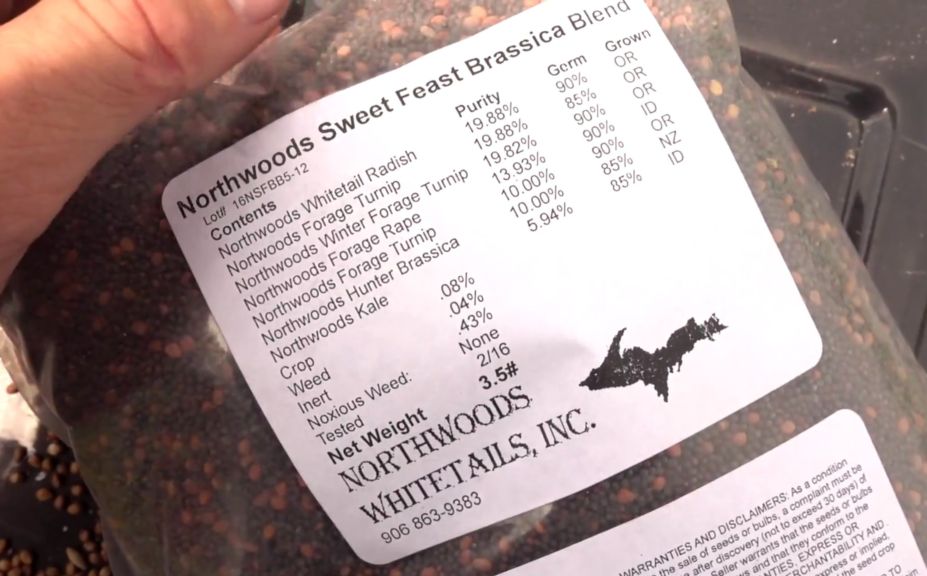
*The Sweet Feast Brassica blend from Northwoods Whitetails has been my absolute favorite high quality brassica blend that I have ever used! Your brassica strategies are incomplete without a high quality brassica combo.
Death by Brassica
Despite occasional online health warnings concerning brassica plantings, I have never heard about, read about or witnessed negative responses by deer that have fed heavily on brassicas, let alone lightly. If you hear any negative claims of brassicas harming whitetails in any way, I encourage you to roll your eyes and proceed to plant brassicas for their contribution to the positive health of both you and the local deer herd. I say "you", because have you ever tried a brassica leaf or chunk of radish or turnip? I have, and I can honestly say that they are quite yummy - and that's a fact.
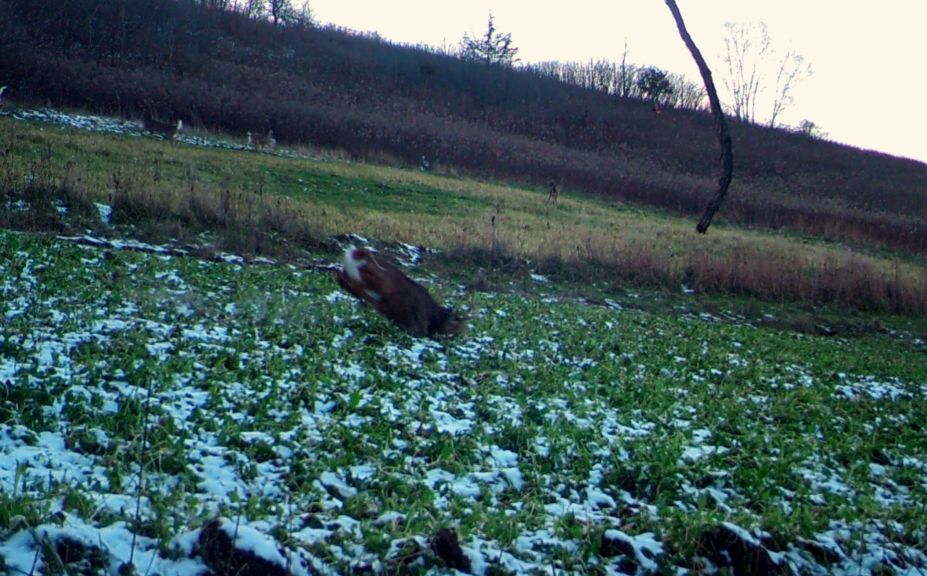
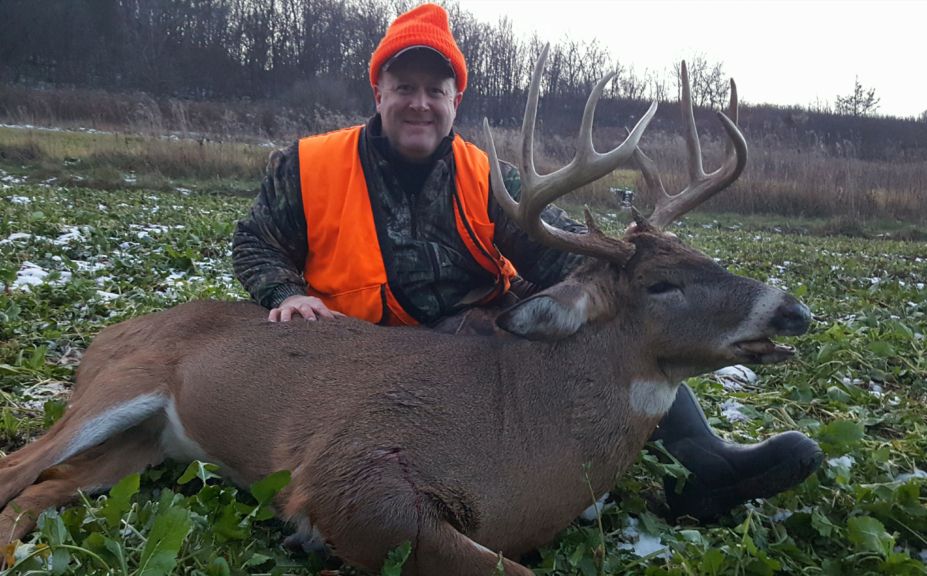
*Folks I have to admit, I have witnessed "death by brassica"! This is a 2015 buck that I shot in SW WI while he began to dine on a Northwoods Whitetails brassica blend. A little bit of lead and a Mock Scrape also came into play, but this mature buck took a nose dive into a brassica plot that when combined with an early season planting, had held his attention since September.
Conclusion
The various brassica strategies for your next great whitetail food plot planting aren't hard to pull off, but the majority of brassica plot failures that I have personally witnessed in the North 1/2 of the Country, did not included some or all of the above proven practices. In fact, the most common brassica food plot failures actually take place when whitetails in wilderness or heavily wooded settings, completely consume the planting before the hunting season even begins. I you have found success with brassica plantings by all means keep doing what you are doing however, if you haven't found success, make sure that you try the proven brassicas strategies that have helped myself and hundreds of my clients for nearly 20 years, before you give up.
